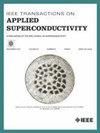Proof-of-Concept of a Reinforcement-Learning Based RT Shimming Technique for HTS Magnets
IF 1.8
3区 物理与天体物理
Q3 ENGINEERING, ELECTRICAL & ELECTRONIC
引用次数: 0
Abstract
We report a newly developed room-temperature (RT) shimming method for high-temperature superconducting (HTS) magnets employing a deep Q-network (DQN), a type of reinforcement learning theory. With only one training session, the shimming control system (agent) learns how to improve the spatial field homogeneity of an HTS magnet and quickly implements the actual shimming process even under various magnetic field distribution conditions based on the experience gained during the training. Various RT shimming simulations with the MATLAB reinforcement learning toolbox were conducted to verify the feasibility of the method. An agent was trained in a 5 T HTS magnet of which the initial homogeneity was 25.79 ppm at a diameter of 10 mm of the spherical volume (DSV) and enhanced the homogeneity of the magnet under identical field condition. The trained agent was then subjected to various deteriorated field conditions of 32.97 and 35.48 ppm and successfully improved the homogeneity to the target value within a very short time. Shimming results demonstrate that the homogeneity of the HTS magnets, for which the field conditions fluctuate with time due to the screening-current-induced field (SCF) or instability of the power supply, can be improved quickly and frequently by using the proposed method whenever necessary.一种基于强化学习的高温超导磁体瞬移技术的概念验证
我们报告了一种新开发的高温超导(HTS)磁体的室温(RT)振荡方法,该方法采用深度q -网络(DQN),一种强化学习理论。通过一次训练,摆荡控制系统(agent)学习如何改善HTS磁体的空间场均匀性,并根据训练过程中获得的经验,在各种磁场分布条件下快速实现实际的摆荡过程。利用MATLAB强化学习工具箱进行了各种RT振荡仿真,验证了该方法的可行性。在直径为10 mm的球形体积(DSV)下,在初始均匀性为25.79 ppm的5 T高温超导磁体中训练一种剂,并在相同的磁场条件下增强磁体的均匀性。经过训练的药剂在32.97 ppm和35.48 ppm的恶劣现场条件下,成功地在很短的时间内将均匀性提高到目标值。振荡结果表明,由于屏蔽电流感应场(SCF)或电源的不稳定性,高温超导磁体的磁场条件随时间波动,在必要时使用该方法可以快速、频繁地改善磁体的均匀性。
本文章由计算机程序翻译,如有差异,请以英文原文为准。
求助全文
约1分钟内获得全文
求助全文
来源期刊

IEEE Transactions on Applied Superconductivity
工程技术-工程:电子与电气
CiteScore
3.50
自引率
33.30%
发文量
650
审稿时长
2.3 months
期刊介绍:
IEEE Transactions on Applied Superconductivity (TAS) contains articles on the applications of superconductivity and other relevant technology. Electronic applications include analog and digital circuits employing thin films and active devices such as Josephson junctions. Large scale applications include magnets for power applications such as motors and generators, for magnetic resonance, for accelerators, and cable applications such as power transmission.
 求助内容:
求助内容: 应助结果提醒方式:
应助结果提醒方式:


